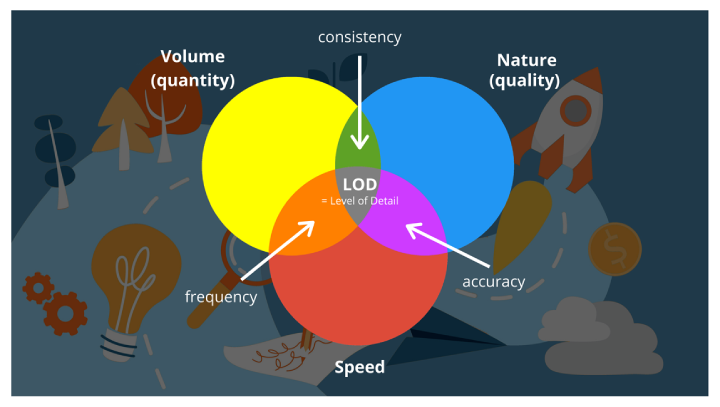Introduction
When it comes to ‘optimisation’ everyone working in the digital space will have their own take.
This is mine: you need to optimise toward a singular goal.
The challenge is this: how do you know whether your own ‘success’ in optimising is actually contributing to the singular goal?
Think about optimisation of a digital campaign that’s role is to generate ‘more leads’. You can optimise based on ‘conversions’ and that looks good but without a suitable feedback loop you may be generating leads that will never convert into customers. In other words, the controller in the system needs to be at a high enough level to see the contribution of the various parts in the overall movement toward the goal. You need one person, or one role/function, who is ‘across everything’. This is a big picture/detailed role - which would be a contradiction if you had to hold both perspectives simultaneously, but instead, fortunately it is really a case of being able to alternate between each one.
The method
In order to open up your own perspective on optimisation, I’d like to offer you a framework that consists of a series of lenses, followed by a series of ‘dials’.
The purpose of each one is intended as a tool for you to utilise, as well as change your default perspective that e.g. more is better.
Here is an overview:
-1.png?width=500&name=1%20(1)-1.png)
Let’s dive in…
Volume/Quantity (more/less)
Are you looking for more of something or less of something?
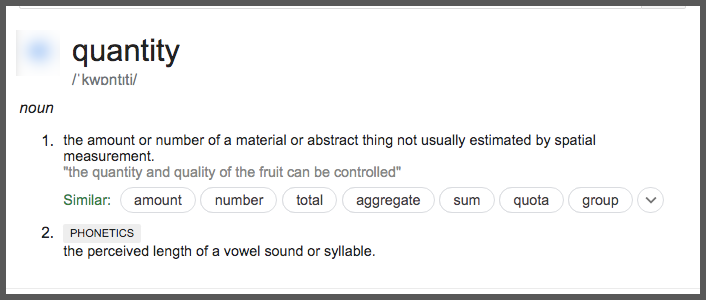
Your knee jerk reaction may be that ‘optimisation’ is usually about ‘getting more’ of something, but think about e-commerce and ‘cart abandonment’ at that final stage prior to purchase - this is something you’ll want to reduce.
In terms of ‘increases’ this may be web traffic, ‘clicks’, conversions etc. - but always be careful here as you may well be optimising something that doesn’t make any difference to the business.
Quality (higher/lower)
Do you want higher or lower quality?
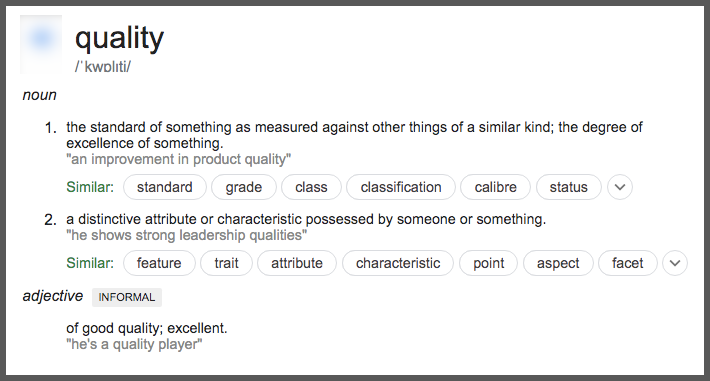
Quality is often related to time and attention, and you may instantly think you always want higher quality. Whilst this is often true you will also find times which require less Time and Attention i.e. Quality e.g. when the ‘wrong people’ are being served in a business (‘tyre kickers’ being a good example).
Speed (Faster/Slower)
In this context, this relates to how quickly something happens.

Think about the following:
How fast a website page loads
How quickly a person is contacted after submitting a service request
How quickly a problem is solved
How quickly a person becomes a customer
In each of these cases, with a few exceptions I’m sure, you want the speed to be faster rather than slower.
In other cases, you may want it to be slower, for example think about how quickly you run a product demo. You could impart all the necessary information in half the time, but by booking in a longer slot with the prospect you actually gain more commitment - so ‘slowing down’ may serve you, and in turn increase the quality of the call.
Which leads us onto the intersections between each of the primary lenses…
The intersections
.png?width=600&name=2%20(2).png)
When you combine the optimisation lenses together you begin to nuance your perception.
Quantity + Quality gives us ‘Consistency’
Quantity + Speed gives us ‘Frequency’, and
Speed + Quality gives us ‘Accuracy’
Once more, start by treating each of these as lenses through which you can see your business processes, and then consider whether you a) want more, or b) want less?
This is when you can begin to ‘turn the dial’ up or down for each one.
Turning the dials
The ultimate dream for business optimisation is to turn one single dial and everything simply ‘improve’. The reality is that with that turn, done by the ‘controller’ in the system, is supported by a series of ‘optimisations’ that will occur throughout the system in order to drive toward the overarching goal.
You may like to consider the 3 dials as ‘active lenses’ - enabling direction to intent.
Let’s start with the dial of ‘Consistency’.
Consistency
This relates to the constancy of a factor.
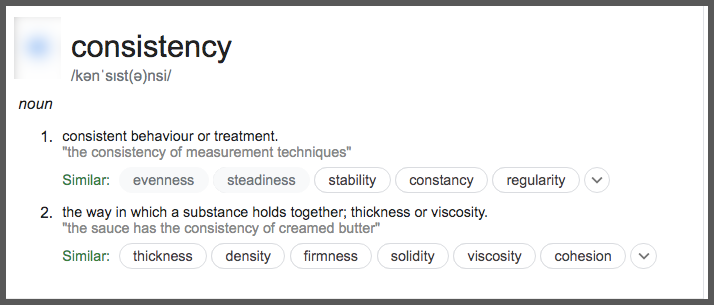
Living at the intersection of Quantity and Quality this gives you insight into an emergent property when you combine the two elements.
Think about how adding two hydrogen molecules with one oxygen molecule yields the quality of ‘wetness’ of water, using an example from Ken Wilber
Consistency means that you have predictable quality and quantity of ‘leads’, which is usually something you’ll strive for in your business - hence wanting to turn it up.
Knowing there will always be a counter-example that requires the dial to be turned down…
You may not want the same quantity of poor quality leads, actions, behaviours etc. Just because something is consistent doesn’t mean it is necessarily ‘good’.
As such, you need to consider do we want more or less of this ‘thing’ in each situation to which you are applying the principle.
Frequency
This relates to how many actions there are within a certain space of time.
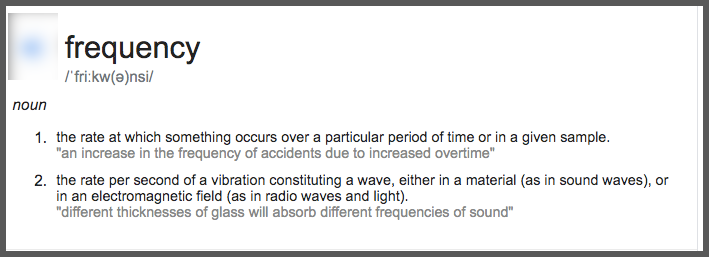
At the intersection of Quantity and Speed, lives Frequency.
By dialing this up you are attempting to gain more within a given timeframe.
An example is when you have ‘stock on the shelf’ that will perish if people don’t buy it, then you need enough people to purchase before the expiration date.
If you dial this up, you may well be pushing for ‘more people to come to your store’ within a given timeframe, but you need to consider “Can you serve them all?” as well as do you have enough stock.
In our own business, one senior marketer from another non-digital firm once suggested it would be “great to have 12 clients all land on Day 1” - and they were shocked when I said they really didn’t understand the nature of our business. In order for us to serve a customer well, we need time to implement a bespoke plan whilst also building our own infrastructure to scale. As such, a new client every month is much more preferable to us than 12 clients all arriving on Day 1 - in other words, frequency matters.
Accuracy
Accuracy is the quality of precision.
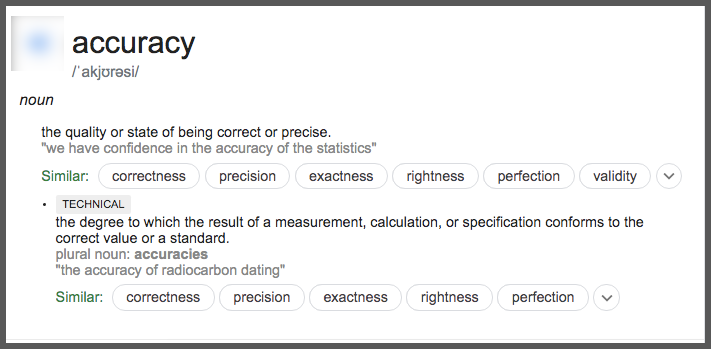
Living at the intersection of Speed and Quality we have the dial of accuracy.
When Accuracy is dialed up there is a tendency for the system to respond by slowing down in order to achieve the associated shift in Quality. But this is only a temporary state based on a human limit i.e. we have to slow down to become more accurate. Once you have achieved an increase in accuracy, it can shift back to dialing up the Speed and Quality as well.
Think about how a person could increase the accuracy of the information they communicate through learning more about a subject, writing it up, turning it into a template and then sending it to people when that future situation arises. Initially it takes longer, but then you can benefit from it saving time.
Sometimes though you may not want such accuracy/precision - for instance, spending time focused on optimising a less than beneficial area of the business. For instance, you may have ‘accurate information’ on a webpage, and keep updating it so it remains accurate, but looking at the stats no-one is visiting the page - so making it more accurate does not drive you toward the singular goal.
Where to begin
Now you’ve had an introduction to the lenses through which you can operate, it is a case of deciding where to begin.
This is relatively easy...start where you can get the quickest wins:
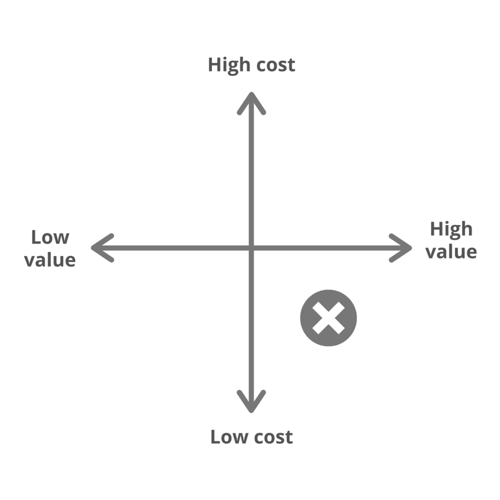
‘High value/Low Cost’ is what you are looking for, but remember to keep in mind the GOAL - it is tempting to get pulled away from this perspective i.e. it is all about manipulating the system to achieve this goal.
The missing lens
For those of you who are fans of Venn Diagrams you will have no doubt wondered whether there would be a central intersection of the 3 main lenses: Quality/Quality/Speed
.png?width=600&name=3%20(1).png)
The 7th lens is… LOD, or ‘Level of Detail’:
“Level of detail is a general design term for video game landscapes in which closer objects are rendered with more polygons than objects that are farther away. Generally speaking, the level of detail is dictated by the game's system requirements.” Source.
Within a business context you can translate this as granularity of information provided through the other three lenses. This is a master lens that can also be dialed up or down. It offers you the ability to dive in deep, or jump back and hold a big picture perspective. This is the Big Picture/Detail perspective that the Digital Cyberneticist holds.
You see how optimisation within the realms of More/Less (Volume/Quantity), Higher/Lower (Quality), and Faster/Slower (Speed) merge to create a new perspective - one that is able to move in and out of the situation, modulate the depth of detail being perceived.
LOD is the lens of the Controller of the system; clockwise takes you in closer, and anti-clockwise further away - with everything in between being an available perspective.
Finally...
Most people want to be told what to optimise in their business. This chapter has offered you an alternative: have all lenses available, and you will ‘see’ what to optimise’, and to what depth of understanding you need to do so.
The reason is simple: every business is different, every day is different, every person is different, every system’s processes are different, the availability of options are different, and so on.
Remember, without ‘one goal’ you cannot optimise (or manipulate, if you prefer) the system effectively, this is after all the purpose of your system.
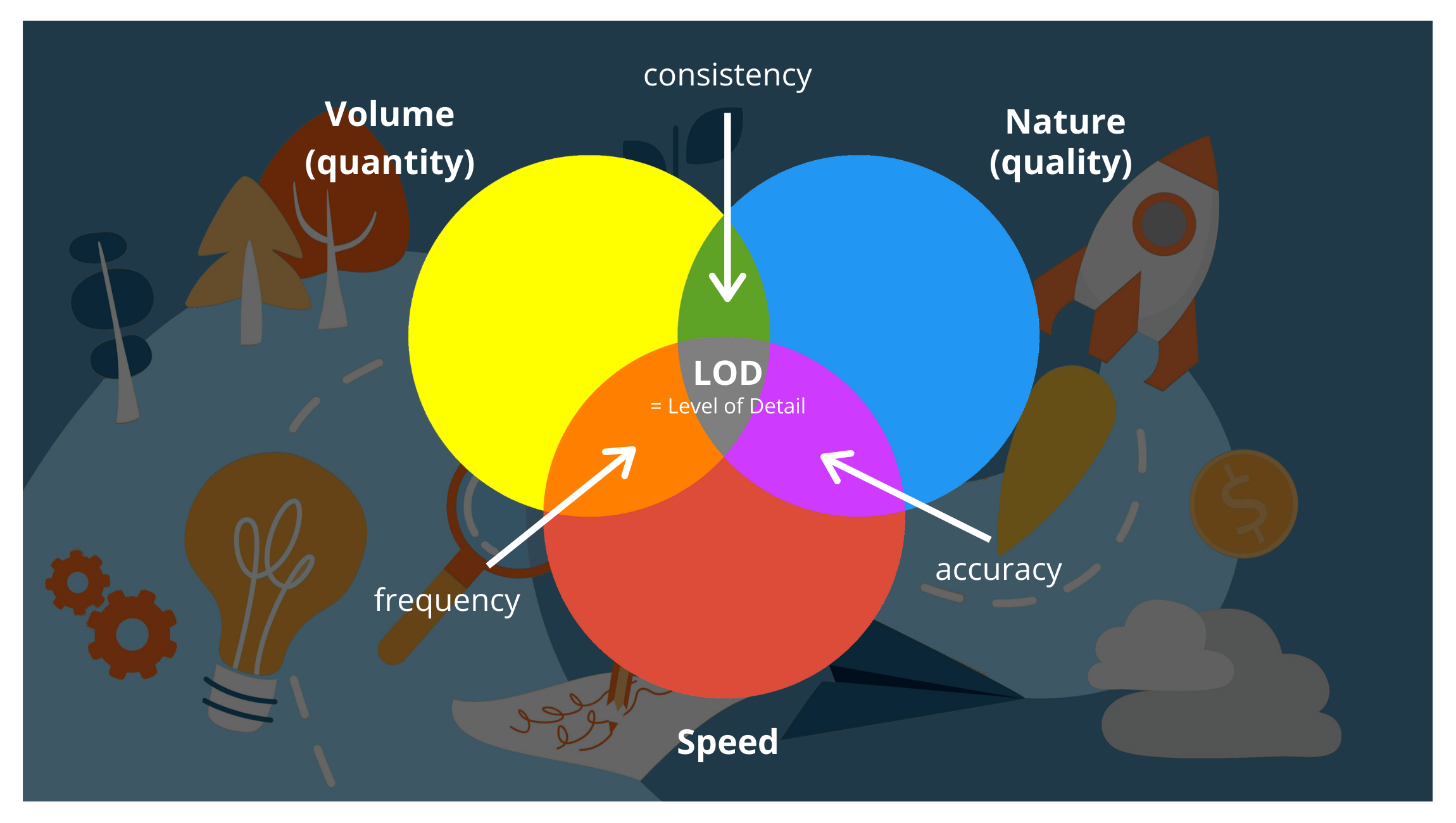
Introduction
When it comes to ‘optimisation’ everyone working in the digital space will have their own take.
This is mine: you need to optimise toward a singular goal.
The challenge is this: how do you know whether your own ‘success’ in optimising is actually contributing to the singular goal?
Think about optimisation of a digital campaign that’s role is to generate ‘more leads’. You can optimise based on ‘conversions’ and that looks good but without a suitable feedback loop you may be generating leads that will never convert into customers. In other words, the controller in the system needs to be at a high enough level to see the contribution of the various parts in the overall movement toward the goal. You need one person, or one role/function, who is ‘across everything’. This is a big picture/detailed role - which would be a contradiction if you had to hold both perspectives simultaneously, but instead, fortunately it is really a case of being able to alternate between each one.
The method
In order to open up your own perspective on optimisation, I’d like to offer you a framework that consists of a series of lenses, followed by a series of ‘dials’.
The purpose of each one is intended as a tool for you to utilise, as well as change your default perspective that e.g. more is better.
Here is an overview:
-1.png?width=500&name=1%20(1)-1.png)
Let’s dive in…
Volume/Quantity (more/less)
Are you looking for more of something or less of something?

Your knee jerk reaction may be that ‘optimisation’ is usually about ‘getting more’ of something, but think about e-commerce and ‘cart abandonment’ at that final stage prior to purchase - this is something you’ll want to reduce.
In terms of ‘increases’ this may be web traffic, ‘clicks’, conversions etc. - but always be careful here as you may well be optimising something that doesn’t make any difference to the business.
Quality (higher/lower)
Do you want higher or lower quality?

Quality is often related to time and attention, and you may instantly think you always want higher quality. Whilst this is often true you will also find times which require less Time and Attention i.e. Quality e.g. when the ‘wrong people’ are being served in a business (‘tyre kickers’ being a good example).
Speed (Faster/Slower)
In this context, this relates to how quickly something happens.

Think about the following:
How fast a website page loads
How quickly a person is contacted after submitting a service request
How quickly a problem is solved
How quickly a person becomes a customer
In each of these cases, with a few exceptions I’m sure, you want the speed to be faster rather than slower.
In other cases, you may want it to be slower, for example think about how quickly you run a product demo. You could impart all the necessary information in half the time, but by booking in a longer slot with the prospect you actually gain more commitment - so ‘slowing down’ may serve you, and in turn increase the quality of the call.
Which leads us onto the intersections between each of the primary lenses…
The intersections
.png?width=600&name=2%20(2).png)
When you combine the optimisation lenses together you begin to nuance your perception.
Quantity + Quality gives us ‘Consistency’
Quantity + Speed gives us ‘Frequency’, and
Speed + Quality gives us ‘Accuracy’
Once more, start by treating each of these as lenses through which you can see your business processes, and then consider whether you a) want more, or b) want less?
This is when you can begin to ‘turn the dial’ up or down for each one.
Turning the dials
The ultimate dream for business optimisation is to turn one single dial and everything simply ‘improve’. The reality is that with that turn, done by the ‘controller’ in the system, is supported by a series of ‘optimisations’ that will occur throughout the system in order to drive toward the overarching goal.
You may like to consider the 3 dials as ‘active lenses’ - enabling direction to intent.
Let’s start with the dial of ‘Consistency’.
Consistency
This relates to the constancy of a factor.

Living at the intersection of Quantity and Quality this gives you insight into an emergent property when you combine the two elements.
Think about how adding two hydrogen molecules with one oxygen molecule yields the quality of ‘wetness’ of water, using an example from Ken Wilber
Consistency means that you have predictable quality and quantity of ‘leads’, which is usually something you’ll strive for in your business - hence wanting to turn it up.
Knowing there will always be a counter-example that requires the dial to be turned down…
You may not want the same quantity of poor quality leads, actions, behaviours etc. Just because something is consistent doesn’t mean it is necessarily ‘good’.
As such, you need to consider do we want more or less of this ‘thing’ in each situation to which you are applying the principle.
Frequency
This relates to how many actions there are within a certain space of time.

At the intersection of Quantity and Speed, lives Frequency.
By dialing this up you are attempting to gain more within a given timeframe.
An example is when you have ‘stock on the shelf’ that will perish if people don’t buy it, then you need enough people to purchase before the expiration date.
If you dial this up, you may well be pushing for ‘more people to come to your store’ within a given timeframe, but you need to consider “Can you serve them all?” as well as do you have enough stock.
In our own business, one senior marketer from another non-digital firm once suggested it would be “great to have 12 clients all land on Day 1” - and they were shocked when I said they really didn’t understand the nature of our business. In order for us to serve a customer well, we need time to implement a bespoke plan whilst also building our own infrastructure to scale. As such, a new client every month is much more preferable to us than 12 clients all arriving on Day 1 - in other words, frequency matters.
Accuracy
Accuracy is the quality of precision.

Living at the intersection of Speed and Quality we have the dial of accuracy.
When Accuracy is dialed up there is a tendency for the system to respond by slowing down in order to achieve the associated shift in Quality. But this is only a temporary state based on a human limit i.e. we have to slow down to become more accurate. Once you have achieved an increase in accuracy, it can shift back to dialing up the Speed and Quality as well.
Think about how a person could increase the accuracy of the information they communicate through learning more about a subject, writing it up, turning it into a template and then sending it to people when that future situation arises. Initially it takes longer, but then you can benefit from it saving time.
Sometimes though you may not want such accuracy/precision - for instance, spending time focused on optimising a less than beneficial area of the business. For instance, you may have ‘accurate information’ on a webpage, and keep updating it so it remains accurate, but looking at the stats no-one is visiting the page - so making it more accurate does not drive you toward the singular goal.
Where to begin
Now you’ve had an introduction to the lenses through which you can operate, it is a case of deciding where to begin.
This is relatively easy...start where you can get the quickest wins:

‘High value/Low Cost’ is what you are looking for, but remember to keep in mind the GOAL - it is tempting to get pulled away from this perspective i.e. it is all about manipulating the system to achieve this goal.
The missing lens
For those of you who are fans of Venn Diagrams you will have no doubt wondered whether there would be a central intersection of the 3 main lenses: Quality/Quality/Speed
.png?width=600&name=3%20(1).png)
The 7th lens is… LOD, or ‘Level of Detail’:
“Level of detail is a general design term for video game landscapes in which closer objects are rendered with more polygons than objects that are farther away. Generally speaking, the level of detail is dictated by the game's system requirements.” Source.
Within a business context you can translate this as granularity of information provided through the other three lenses. This is a master lens that can also be dialed up or down. It offers you the ability to dive in deep, or jump back and hold a big picture perspective. This is the Big Picture/Detail perspective that the Digital Cyberneticist holds.
You see how optimisation within the realms of More/Less (Volume/Quantity), Higher/Lower (Quality), and Faster/Slower (Speed) merge to create a new perspective - one that is able to move in and out of the situation, modulate the depth of detail being perceived.
LOD is the lens of the Controller of the system; clockwise takes you in closer, and anti-clockwise further away - with everything in between being an available perspective.
Finally...
Most people want to be told what to optimise in their business. This chapter has offered you an alternative: have all lenses available, and you will ‘see’ what to optimise’, and to what depth of understanding you need to do so.
The reason is simple: every business is different, every day is different, every person is different, every system’s processes are different, the availability of options are different, and so on.
Remember, without ‘one goal’ you cannot optimise (or manipulate, if you prefer) the system effectively, this is after all the purpose of your system.

